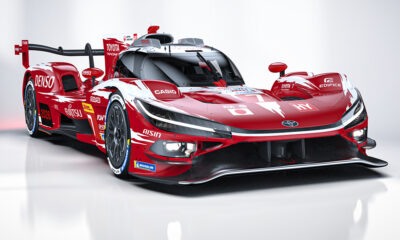
Photo: Drew Gibson/Ford
Tire changes are set to be allowed during refueling in the FIA World Endurance Championship next season, as part of changes likely to be made to the pit stop regulations for the 2018/19 ‘Super Season.’
Sportscar365 has learned that plans are in place for revisions to the current procedure, which prohibits work being done to the car, other than a driver change, during refueling.
The change, already adopted by the FIA and ACO and communicated to teams earlier this month, would essentially bring the WEC in line with the current pit stop rules in IMSA, which have been used since 2014.
Details, such as the number of permitted air guns, refueling while the engine is running and potential wheel spin, however, are understood to still be open for discussion.
ACO Sporting Director Vincent Beaumesnil declined to comment when asked about the changes, which are subject to final approval by the FIA World Motor Sport Council.
“It’s good to continually evolve, isn’t it?” Aston Martin Racing Managing Director John Gaw told Sportscar365. “New things, new challenges, so we’ll see how it goes.”
Gaw said a combined stop would be safer, as crews wouldn’t be forced to rush the tire changes, as the FIA and ACO has restricted refueling times to 35 seconds for GTE-Pro cars.
“The guys get injured a lot trying to do [tire changes] in like 13 seconds, whereas they’ll not have to do that any more,” he said. “It’ll take an element of competition out, won’t it, from that perspective?
“But there’ll be plenty of new stuff that’ll be coming next year as well. I just wish they’d let us do burnouts on exit as well.”
Ford WEC team principal George Howard-Chappell, however, feels it could pose a greater safety risk for crews, with the car on the air jacks during refueling.
“The reason always given for separating the fueling from the tire change was that if there was a fuel drama, at least you could push the car away,” he told Sportscar365.
“If you can’t get near it to put wheels on it, you’re screwed. So you’d have fire, with your fuel rig, right in the garage and nothing you can do.
“The guys also don’t like it because it’s taking away the last bit of competition for the mechanics.”
It’s unclear if engines will be required to be shut off during refueling, as is the case now.
“Fundamentally, it’s much better for the reliability of the car if you don’t have to turn the engine and off and have to gently drag the clutch to get the thing out of the pits,” said Jota Sport team director Sam Hignett.
“It’s better for the spectacle that we need. We need that in the pit lane.
“We should do everything together. It should be engine running, fuel, tires, like it is in America. We should be allowed to wheel spin out of the pits.”
Tire Limitations Set to Remain Unchanged
The difference between IMSA and the WEC that’s expected to remain, however, is tire allocation, with LMP1, LMP2 and GTE-Pro teams limited to only four sets of tires, plus two jokers, in a six-hour race, which forces teams to double stint.
“Double stinting on one hand but changing tires during the same time as refueling. What’s the sense behind it?” said Porsche GT factory motorsports director Marco Ujhasi.
“But we are open and used to both, so we would take it like it is.”
Final confirmation on the changes are expected at the next WMSC meeting on Dec. 6.


























